As demonstrated in Part 3, The Penitent Man (2010) draws upon The Lake House (2006) for the support of some key symbolism. The scene I've been decoding features many references to another film, The Wizard of Oz (1939), which engages us more deeply on the themes of a quest, sun god cult and
 goddess worship, stargate operation and Illuminati mind-control programming. To find what I've already written about The Wizard of Oz, search this blog.
goddess worship, stargate operation and Illuminati mind-control programming. To find what I've already written about The Wizard of Oz, search this blog. When Dr. Pyatt is walking to Blooms on Broadway to get roses for his wife, we see a man casually reading a paper. He's leaning against the wall of a building, in front of some store windows. This is very subtle, but as Jason approaches, his reflection can be detected as it passes by the window. If you look closely at the window you'll see that it's a store with some dolls on display.
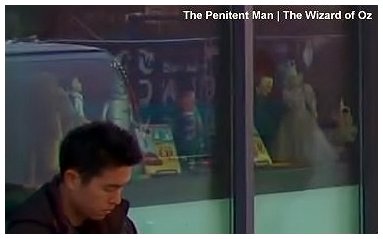 Behind the man's head there are some that look familiar, the tin man, Dorothy and the cowardly lion from the Wizard of Oz. On the right, it's Glinda, the “good” witch of the North wearing her starry crown. You can't perceive it in a screenshot, but Pyatt's reflected image sweeps through the scene.
Behind the man's head there are some that look familiar, the tin man, Dorothy and the cowardly lion from the Wizard of Oz. On the right, it's Glinda, the “good” witch of the North wearing her starry crown. You can't perceive it in a screenshot, but Pyatt's reflected image sweeps through the scene. We may assume that he continues walking up the sidewalk and passes right by those figures in the window, but our seeing that actually happen would not be as potent as what we are shown. With the motion of his reflected image passing across the window, it draws our attention to it, and the figures seen inside play an important role. Perhaps more importantly, we see Pyatt's image appear with that scene in a way that identifies him with it, linking his presence. The way the scene was shot kind of projects him into The Wizard of Oz, onto that stage in 1939. The Hermetic Maxim, As Above, So Below. Through time-space.
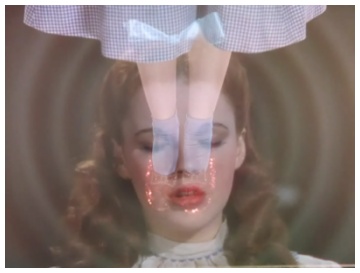
It doesn't really seem significant, until he gets to the Pretty Parlor!
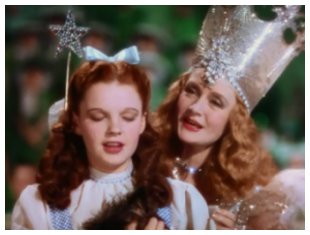 The MGM classic seems to be the director's inspiration for the magic wand because this how the dimensional portal is opened for Dorothy's return to Kansas. In that scene, Glinda, the Witch of the North, coaches Dorothy on the magical ritual.
The MGM classic seems to be the director's inspiration for the magic wand because this how the dimensional portal is opened for Dorothy's return to Kansas. In that scene, Glinda, the Witch of the North, coaches Dorothy on the magical ritual. 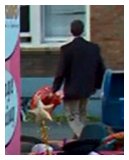 While Dorothy wears the ruby slippers, she clicks her heels together 3 times (resurrection number) and softly chants the pass phrase, “There's no place like home.” As she does this, Glinda stands by, waving her star-on-a-stick behind Dorothy's head. The portal opens and Dorothy is transported back home to Kansas.
While Dorothy wears the ruby slippers, she clicks her heels together 3 times (resurrection number) and softly chants the pass phrase, “There's no place like home.” As she does this, Glinda stands by, waving her star-on-a-stick behind Dorothy's head. The portal opens and Dorothy is transported back home to Kansas. 
Compare the scene where Dorothy is ready to go with The Penitent Man's version.
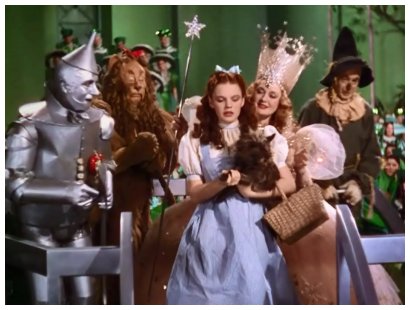
- Goddess wearing a celestial crown? Check. (Starbucks)
- Basket? Check.
- Vintage clothing? Check.
- Star-on-a-stick magic wand? Check.
- “Stars aligned,” where the star on a stick is visually aligned with the star of the show, who is heading for home? Check.
Here's a video:
Nicholas “genie” Gyeney knows how to borrow, adapt and leverage in making his movie magick. The redundancy in following up the earlier scene where Pyatt's reflection passed across the window display adds significantly to the impact. Gyeney has also learned the value of supporting the visuals in the soundtrack.
During Dorothy's stargate transit, one of the sounds we hear is a glockenspiel (or xylophone), played as a mallet slides across the bars. The industry has long associated that sound with a transitioning into and from a dream state, like that of the harp. The striking of the tuned bars of this keyboard-percussion instrument makes them ring like a bell. In the study, Bells - Supernatural Enchantment and a Biblical Perspective, I document how bells are used for transiting between the dimensions, and that's not just fiction. The word, clock, comes from the word for bell. I've been presenting many examples of stargate transits where clocks and timing devices are linked to the stargate transit. During this scene where Darnell shadows Pyatt, the repetitive soundtrack is reminiscent of a ticking clock. It's a wee bit obfuscated, but that's what it is.
This esoteric scene in the Wizard of Oz pictures more than just a simple transit. Other elements suggest to us that a resurrection-transformation is in view.
Dorothy appears in Kansas, lying in her bed in a coma that was induced by head trauma.
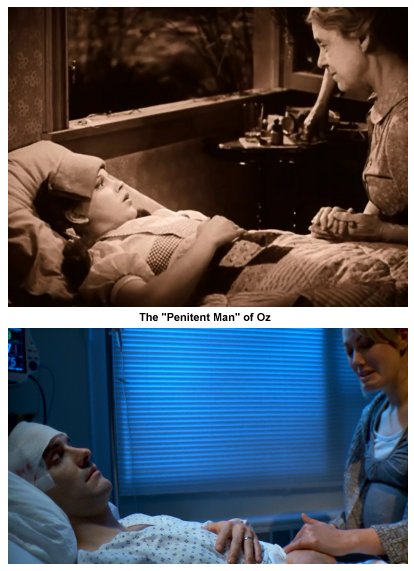 Her beloved Auntie Em is caring for her, placing a cooling compress on her forehead. The wet compress Auntie Em just applied is a baptism symbol. “Wake up honey,” she says. Honey? Cue the bee goddess, because the honey bee is a resurrection symbol! And with that, she awakens, having returned from Oz, “the land down under,” which is to say, from the underworld realm of the dead through the Silver Gate. On awakening, Dorothy passionately gives a report on her valuable lessons learned. Jason Pyatt, likewise.
Her beloved Auntie Em is caring for her, placing a cooling compress on her forehead. The wet compress Auntie Em just applied is a baptism symbol. “Wake up honey,” she says. Honey? Cue the bee goddess, because the honey bee is a resurrection symbol! And with that, she awakens, having returned from Oz, “the land down under,” which is to say, from the underworld realm of the dead through the Silver Gate. On awakening, Dorothy passionately gives a report on her valuable lessons learned. Jason Pyatt, likewise. When Jason first awakens from the coma, he's frantic. He becomes lucid as we see Eve in the bathroom at the sink, splashing water on her face. That's the baptism symbol. The goddess agency is the Papal High Priest, who baptizes the man and the anointing comes upon him from the underworld.
Compare these images.
- In coma caused by head trauma
- Lying in bed with head on pillow, with something applied to promote healing
- Hand resting on midsection
- Caring loved one seated at their left, holding hand, pleading for the victim to wake up
- Window between them
In the Wizard of Oz, when we see Dorothy back in Kansas, the film format has changed from full color to black and white, which suggests that she has acquired the knowledge of good (white) and evil (black).Jason Pyatt was enlightened with the great secret and yet had the wisdom to choose not to use it. He just didn't have the sense to guard it properly.
Dorothy had completed her quest, acquiring the broom of the Wicked Witch of the West, and valuable wisdom. Jason Darnell-Pyatt had completed his quest, as his namesake Jason the Argonaut also did, who acquired the golden fleece. I have to think that the title of The Penitent Man was inspired, not as we're led to think, by a painting in The Louvre, but by another film, Indiana Jones and the Last Crusade (1989). That plot involves the great quest for the holy grail. Following where that trail of insight leads provides more insight about the purpose of the film.
The holy grail is believed to involve immortality, which is, in effect, cheating time. According to the plot of the 3rd film in the Indiana Jones franchise, those who seek the grail must pass a series of 3 tests in order to gain access to the temple complex containing the holy grail. The first test has to do with the “Breath of God” (breath = life & His eternal spirit life). A riddle must be solved. “Only the penitent man will pass.” To fail is to incur the penalty of death.
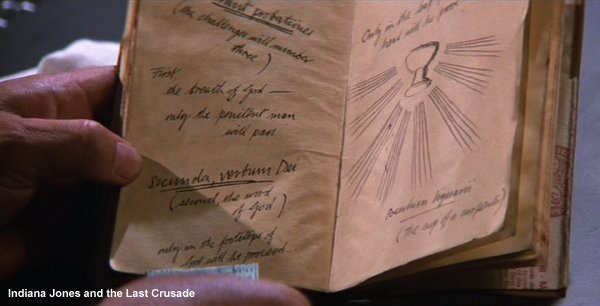
The Penitent Man. Darnell-Pyatt and/or the director-writer himself have a go at initiation. I note that “Indie fashions” appears on the corner of the Pretty Parlor building. Indy - that's the nickname for Indiana Jones.
We have to keep following the clues on our own quest. The riddles recorded in Professor Henry Jones's diary were claimed to be copied from the source, the Chronicles of St. Anselm. Are they real? Well, basically, yes. Research, Saint Anselm of Canterbury.
“He entered the Benedictine order at the Abbey of Bec at the age of 27, where he became abbot in 1079. He became Archbishop of Canterbury under William II of England. He was exiled from England from 1097 to 1100, and again from 1105 to 1107 (under Henry I of England), as a result of the investiture controversy, the most significant conflict between Church and state in Medieval Europe. Anselm was proclaimed a Doctor of the Church in 1720 by a Papal Bull of Pope Clement XI. His feast day is April 21.” (Wikipedia)
Could that be a reason why Nicholas Gyeney wore the gray hoodie with 27 printed on it when he did his cameo in the lobby of the Biltmore, to identify himself with the brilliant goddess worshiping Benedictine monk who caused such a stir?
“Saint Anselm (1033-1109) was a Benedictine monk, Christian philosopher, and scholar who is recognized for many intellectual accomplishments, including his application of reason in exploring the mysteries of faith and for his definition of theology as "faith seeking understanding."
...
The brilliance of Saint Anselm's thinking and writing about the nature of faith and of God has intrigued and influenced scholars since the Middle Ages. His highly respected work, Monologium, rationalizes proof of God's existence.”
(Saint Anselm College - Who was Saint Anselm)
...
The brilliance of Saint Anselm's thinking and writing about the nature of faith and of God has intrigued and influenced scholars since the Middle Ages. His highly respected work, Monologium, rationalizes proof of God's existence.”
(Saint Anselm College - Who was Saint Anselm)
Think about what St. Anselm is known for. Nicholas Gyeney played upon “his definition of theology as 'faith seeking understanding'” in what Darnell conveyed to his younger self. But a darnel is a tare, and instead of rationalizing proof of God's existence, with the claim of having the wisdom gained from eye-witness experience, something quite contrary is expressed, making the film a subtle anti-Monologium.
Dr. Pyatt: Now you mentioned being able to see the creation of man. I mean, you could see humans assemble, develop their gods, and destroy each other. I mean, Jesus Christ!
Mr. Darnell: He was just a man. Imagine the devastation from a revelation like that. 95% of the world's population believed in a god in some form. The scientists, the politicians, and eventually the public were able to go back and see the Christian Son of God as a mortal man. It shook the foundations. Even atheists began to lose hope for the future. Southern evangelists began lashing out violently at anybody who supported the new discovery. The world was more divided than ever. The road to hell had been paved with good intentions, and it was just the beginning.
Mr. Darnell: He was just a man. Imagine the devastation from a revelation like that. 95% of the world's population believed in a god in some form. The scientists, the politicians, and eventually the public were able to go back and see the Christian Son of God as a mortal man. It shook the foundations. Even atheists began to lose hope for the future. Southern evangelists began lashing out violently at anybody who supported the new discovery. The world was more divided than ever. The road to hell had been paved with good intentions, and it was just the beginning.
The Osiris-Horus modeling of Gyeney's characters are functionally, Anti-Saint Anselms. The Penitent Man, indeed. Gyeney knows stuff.
I'll repeat here the closing paragraph from Part 1. I don't doubt that the conspiracy being given a further bump by Gyeney's clever script will be validated in the coming hour of crisis with false evidence, ported through time itself as a epic hoax. The evidence offered in support of the lie will be quite real. It just won't be true.

Anubis in kc union station w/# 25 chiefs jersey. Roshashana starts sep 24 and ends on 26. Then there is Xmas 25.
ReplyDeleteKaw , kanza, people of the south wind. Kc chiefs play at arrowhead stadium. Diana's weapon? Lots of official seals with eagles gripping arrows. Stadium is in Missouri, gateway to the Wild West . They got a big arch. On kansas's state dome the Indian shoots towards the North Star. 666 post mark.
ReplyDelete